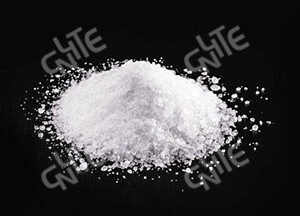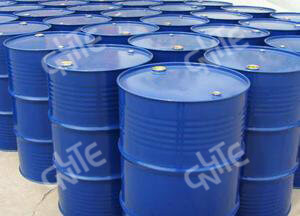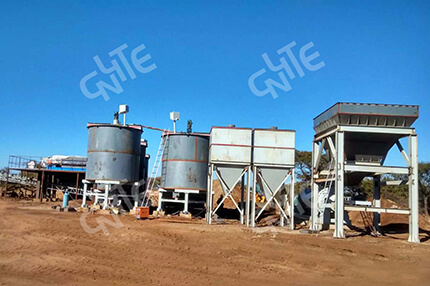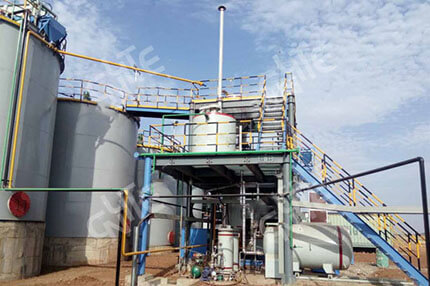-
 E-mail
guhaixin0724@gmail.com
E-mail
guhaixin0724@gmail.com
-
 Call Us
008613683147042
Call Us
008613683147042
 E-mail
guhaixin0724@gmail.com
E-mail
guhaixin0724@gmail.com
 Call Us
008613683147042
Call Us
008613683147042

Sodium cyanide is an important raw material used in industry, which usually exists in white crystal or powder. It easily deliquesces in the air and it tastes bitter as almond, also this chemical can dissolve in water, ammonia, ethyl alcohol and methyl alcohol. Sodium cyanide will give off the toxic and flammable hydrogen cyanide.
Sodium cyanide will not exist together with acid, will react with carbon dioxide and will decompose in air and water. If exposed in the oxygen, it will decompose as hydrogen cyanide, carbon monoxide, carbon dioxide and oxynitride. Sodium cyanide will react violently with nitrate, nitrite, and chlorate, which may cause explosion. It will give off the toxic and flammable hydrogen cyanide when mixed with acid. Also, it will give off few hydrogen cyanide in the wet air and carbon dioxide.



Sodium cyanide is a basic chemical raw material, which can be used in producing its derivatives, metallurgy, electroplate, medicine, agriculture and other industry area.
The mining industry has historically used sodium cyanide for gold extraction since the latter half of the 19th century, and remains the largest of the end users of the sodium cyanide market. About 75% of global sodium cyanide consumption is used in the mining industry, and about 90% of sodium cyanide consumption in North America is used in mining.
The main manufacturers of sodium cyanide are Dupont and Cyanco in the United States, Evonik in Germany, Gold Reagents (AGR) and Orica in Australia, Taekwang lnd. in South Korea and TongshuPetro. Their production capacity accounts for about 50% of the total global production capacity, occupying a dominant position in international trade.
If you want to know the sodium cyanide manufacturers in Philippines, India, malaysia, South Africa, Turkey, Canada and other countries, you can contact our online service.
Cyanide is acutely toxic to humans. Liquid or gaseous hydrogen cyanide and alkali salts of cyanide can enter the body through inhalation, ingestion or absorption through the eyes and skin. The rate of skin absorption is enhanced when the skin is cut, abraded or moist; inhaled salts of cyanide are readily dissolved and absorbed upon contact with moist mucous membranes.
Gold cyanidation process has a history of more than 100 years. Due to its simple process and high gold recovery rate, the gold cyanidation method is widely used by many gold miners. Since cyanide is highly toxic, many countries have begun to formulate relevant regulations to control the cyanide content in tailings.
The Universal Treatment Standard published by the US EPA stipulates that the total cyanide content of hazardous waste landfills must be less than 590.00 mg/kg, and the content of easily released cyanide must be less than 30.00 mg/kg.
Eu Directive 2006/21/EC stipulates that for gold mines that have been approved or put into production before May 1, 2008, the content of weak acid decomposable cyanide in the tailings shall not be higher than 50 PPM since May 1, 2008, 25 PPM since May 1, 2013, and 10 PPM since May 1, 2018.
Ordinanceon Underground Waste Stowage stipulates that the total cyanide content of solid waste should be below 100 mg/kg, the total cyanide content in the exudate should be below 50 μg/L, and the easily released cyanide content should be below 10 μg/L. For the landfill of inert waste that does not have an impermeable liner, the easy-release cyanide concentration of the leaching solution should be less than 0.01 mg/L. The concentration of easily released cyanide in the leachate entering the hazardous waste landfill should be less than 1 mg/L.
The sodium cyanide prices from different suppliers are different. In addition, the sodium cyanide manufacturer will comprehensively consider the minimum order quantity, freight, insurance premium, quotation method and other factors to determine the final product quotation. The general price of sodium cyanide is 1500-2000 dollars. However, if sodium cyanide is used, the process of cyanide tailings will cause higher production costs. So it is more economical to purchase sodium cyanide substitute.
If you want to know the sodium cyanide price in Philippines, India, Kenya, Malaysia, South Africa and other countries, you can contact our online service.
At present, many countries have enacted relevant laws to limit the use of sodium cyanide because of its high toxicity and great harm to the ecological environment. Therefore, more and more gold processing plants have begun to choose cyanide substitutes for gold recovery. The currently mostly used cyanide substitutes is CNLITE eco-friendly gold leaching chemical.
CNLITE eco-friendly gold leaching reagent is a kind of leaching reagent that can replace sodium cyanide without changing the original equipment and cyanide process. 100% cyanide substitute. It can be used directly for gold ore beneficiation and refining, commonly in gold leap leaching process, pool leaching process, CIP, CIL, etc.. Compared with the traditional leaching agent, CNLITE eco-friendly gold leaching reagent can truly achieve targets of green and environmental protection with no pollution.

The 300 tpd gold CIP project in Ghana uses CNLITE gold leaching chemical for gold leaching and reaches ideal separating index.

With CNLITE gold leaching chemical, the gold tailings CIP plant in Asupo Bolikansais gets ideal separating index without causing pollution.

The gold ore in the heap leaching project in Suriname is hard to separate, but using CNLITE gold leaching chemical, it reaches a relatively ideal result.
Please leave your message here! We will send detail technical info and quotation to you!